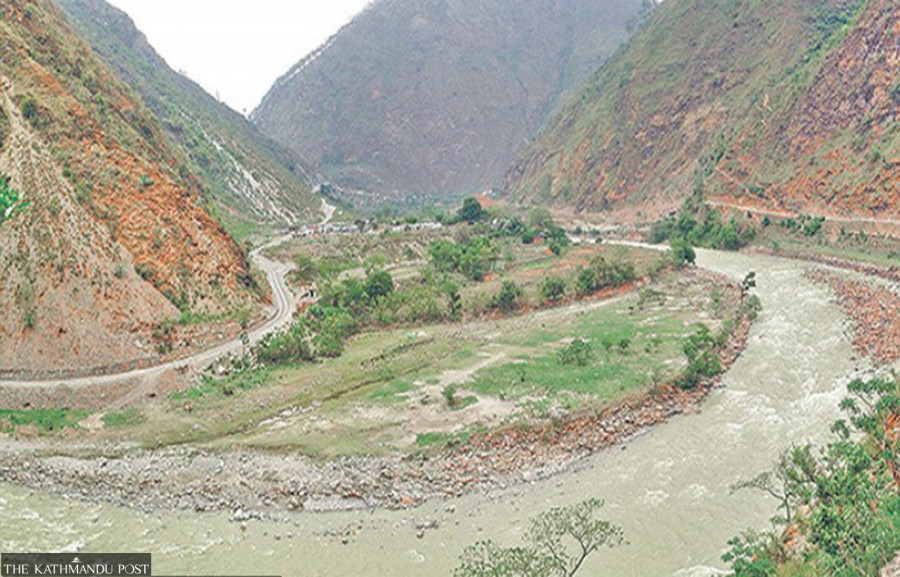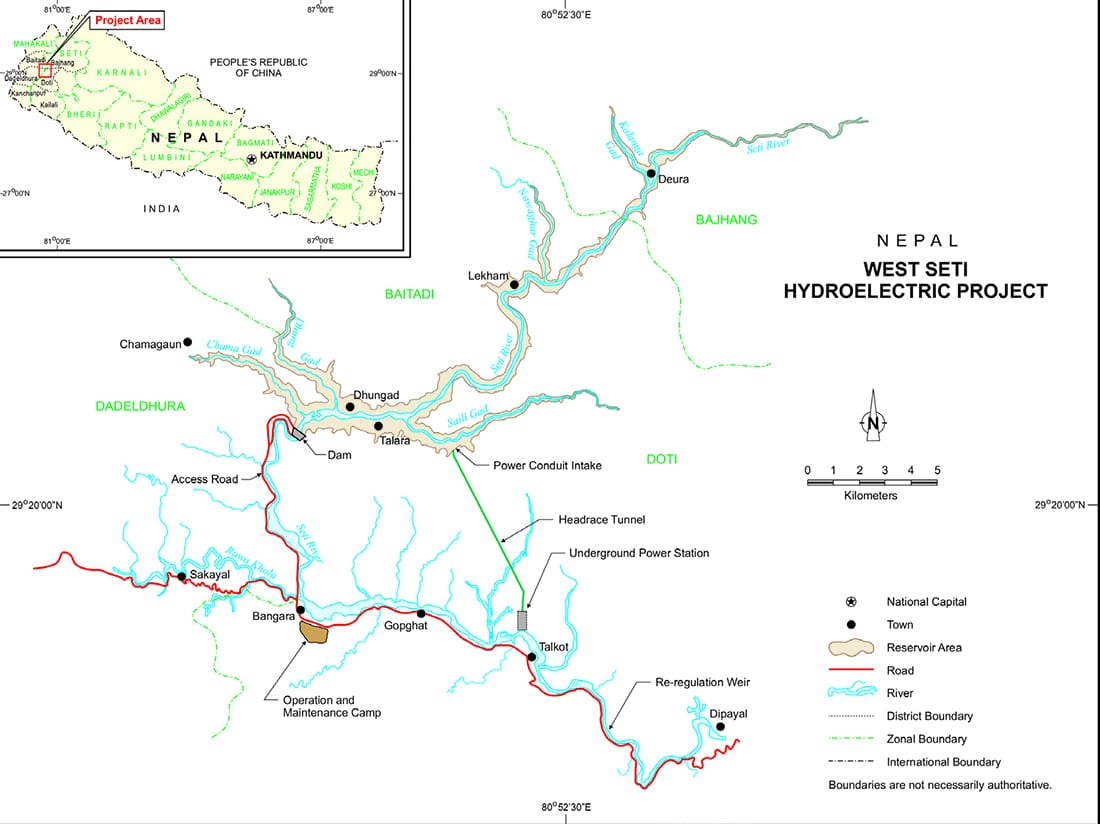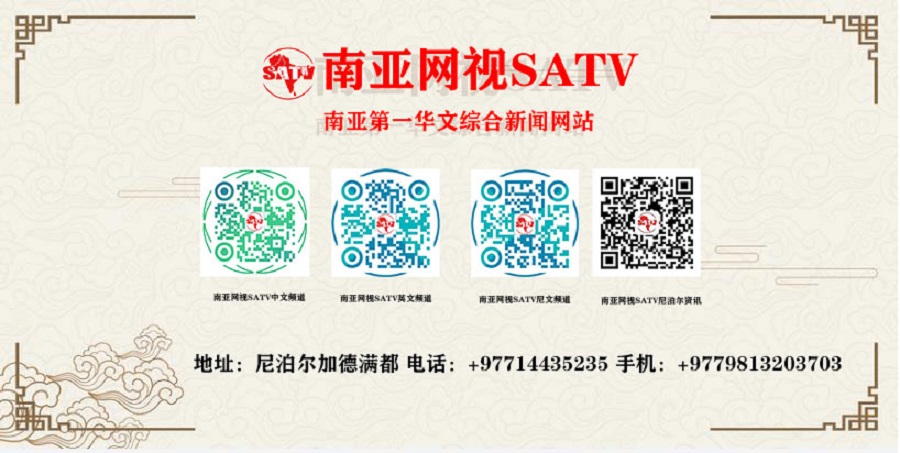
The proposed 750-megawatt West Seti Hydropower Project, which is to be built on the Seti river in far-western Nepal, has remained on the drawing board for the last six decades. Post File Photo
Nepal has decided to hold talks with India for the development of the West Seti Hydropower Project, which has remained in hibernation for six decades over investment concerns.
This time, according to Prime Minister Sher Bahadur Deuba, the issue will be directly discussed with his Indian counterpart, Narendra Modi, who is visiting Lumbini on May 16.
Addressing a gathering in his hometown Dadheldhura on Tuesday, Deuba said that the West Seti project will be discussed with Modi.
Modi is arriving in Lumbini on a day-long visit on the occasion of the Buddha Jayanti.
The proposed 750-megawatt West Seti Hydropower Project, which is to be built on the Seti river in far-western Nepal, has remained on the drawing board for the last six decades.
Lately, the government has remodelled the project as West Seti and Seti River (SR-6), a joint storage project, with the capacity to generate 1,200 megawatts of electricity.
This storage or reservoir will fill up during the monsoon season (mid-June to late September) and the water will be drawn to generate power during peak hours each day in the dry season.
“We failed to invest in this project. So, during the visit of Prime Minister Modi, we will take up the matter with him,” Deuba said. “Since India is reluctant to purchase energy produced by Chinese companies in Nepal, we will talk with Modi for the engagement of Indian developers.”
Deuba added: “There is the need for a decisive negotiation with a reliable Indian company for the development of the project. We need to invest in storage-type projects for energy security in the dry season [winter].”
According to Deuba, besides West Seti, the government has decided to hold talks to develop the Pancheshwar Multipurpose project too.
The Pancheshwar Multipurpose Project is a major arm of the Mahakali Treaty signed between Nepal and India in 1996 but due to several differences over the formation of the Pancheshwar Development Authority, the project implementing body, and agreement on its detailed project report, this project has remained in limbo for decades.
As soon as Deuba was elected prime minister in July last year, the government decided to push the West Seti forward. A panel headed by Biswo Nath Poudel, vice chairman of the National Planning Commission, was constituted to move the project ahead.
The panel members include secretaries from Law and Parliamentary, Energy, and Finance ministries including the chief executive officer of the Nepal Investment Board, under whose purview the project falls.
“We have completed the study, mostly regarding the hydrology and the investment modality of the project,” said Sushil Bhatta, the chief of the board.
The project has been on the drawing board since the early 1980s. The project also attracted some geopolitical fissures in the last two and a half decades since the government issued the developing licence to a French company and then to a renowned Chinese company.
After India introduced a policy not to buy energy produced by means other than its own investment, the government is now working another way round and that is why the prime minister thinks it is better to hand over the project to an Indian company, a government secretary, who wished to remain anonymous, told the Post.
“We have heard nothing more than the prime minister’s speech today [Monday]. Deuba must be proposing the project to attract investment.”
The government has been studying several other possible projects in the Karnali basin, the country’s poor region with low human development index.
“As the chairman of Nepal Investment Board, the prime minister holds the right to talk about the project and its development modalities,” said Bhatta.
“If the prime minister makes an official proposal with his [Indian] counterpart, then the Indian side will respond,” the secretary said. “The negotiations will begin then.”

Image courtesy: ADBThe project dates back to 1981 when a 37-megawatt run-of-the-river scheme was proposed based on preliminary studies conducted in 1980-81.
In 1987, the French company Sogreah prepared a pre-feasibility study proposing a 37-megawatt run-of-the-river scheme without building a dam, according to a report of the Asian Development Bank.
Later, the same company revised the capacity to a 380-megawatt storage-type scheme stating that the energy could be optimised without environmental impacts.
West Seti Hydro, a company promoted by Australia’s Snowy Mountain Engineering Corporation, won the survey licence for the project in 1994. The government issued a construction licence to West Seti Hydro on June 27, 1997.
The project was originally designed as export-oriented with 90 percent of the power intended to be sold to India. However, the project, whose cost was estimated at Rs120 billion the, failed to go into construction.
The cash-strapped project got a boost when China National Machinery and Equipment Import and Export Corporation (CMEC) decided to invest in it.
CMEC even signed an agreement with the project during prime minister Madhav Kumar Nepal’s China visit in 2009. CMEC President Jia Zhiqiang and West Seti Hydro director Himalaya Pandey signed a memorandum of understanding in Beijing. The Chinese firm had decided to invest Rs15 billion in the project.
However, CMEC later opted out of the project saying that Nepal lacked an investment-friendly environment. Another important shareholder in the company, the Asian Development Bank, also did not show interest citing a lack of public acceptance of the project and the absence of good governance.
The project received yet another jolt when the main promoter of the company, Snowy Mountain, stopped sending funds for office operations in August 2010.
The government revoked the licence of West Seti Hydro on July 27, 2011.
Then came Three Gorges International Corporation, China’s biggest hydropower developer and the operator of the world’s largest hydropower plant at the Three Gorges Dam on the Yangtze River.
The project was formally handed over to the Chinese company on August 29, 2012.
In November 2017, state-owned power utility Nepal Electricity Authority signed the final agreement with China Three Gorges International Corporation, a subsidiary of China Three Gorges Corporation, to set up a joint venture to develop the 750-megawatt West Seti Project.
In 2018, China Three Gorges Corporation hinted at pulling out of the project saying it was financially unfeasible because of the steep resettlement and rehabilitation costs.
On May 29, 2020, the then finance minister Yubaraj Khatiwada, presenting the annual budget, announced plans to build the project by mobilising Nepal’s internal resources. The announcement effectively scrapped a $1.6 billion plan by the Chinese firm.
West Seti, whose cost was projected at $1.6 billion a decade ago, has now been remodelled.
Prime Minister Deuba also raised Indian concerns during his statement on Tuesday.
India, early this year and earlier too, communicated to the government and independent power producers that they must ensure there will be no Chinese components in their hydropower projects if Nepal’s private sector plans to sell electricity in India’s power exchange market.
Deuba has hinted at signing some kind of understanding with India during his meeting with Modi on May 16 in Lumbini.
The Procedure for Approval and Facilitating [cross border] Import/Export (of electricity] by the Designated Authority, introduced by the Central Electricity Authority under India’s Power Ministry, has imposed restrictions on power trading if there is investment from a country generating electricity with which India shares a land border and a third country sharing a land border with India, which does not have a bilateral agreement on power sector cooperation.
“Let's develop this project. It’s very feasible and profitable,” said Krishna Acharya, chairman of the Independent Power Producer Association of Nepal. “Technically and economically, this is a viable project.”
The Indian reservations towards not buying power produced through investments other than India’s own should not be seen as a negative development, Acharya. “This is happening elsewhere in the world also.”
Nepal can earn up to Rs310 billion per year in 2030 and as high as Rs1,069 billion per year in 2045 if the country is able to sell electricity to India by harnessing its hydropower potential, according to a report.
Nepal stands to generate these earnings provided the country starts exporting 13 gigawatts of electricity to India by 2030 and double this capacity by 2045, says the report titled ‘Economic Benefits from Nepal-India Electricity Trade’ released in 2017.
To harness electricity of this quantum, Nepal needs to invest up to Rs2,596 billion between 2012 and 2030 and another Rs2,216 billion in between 2031 and 2045, says the report produced by Integrated Research and Action for Development.
Investment in hydroelectric projects for cross-border power trade will not only benefit Nepal, but India as well—although it expects to have a large presence of solar PV, as it has already embraced renewable policy.
“We are wasting water and money,” said Acharya. “Though we are not aware of the government’s decision, if West Seti goes into implementation, it will be good for the country’s economy.”













